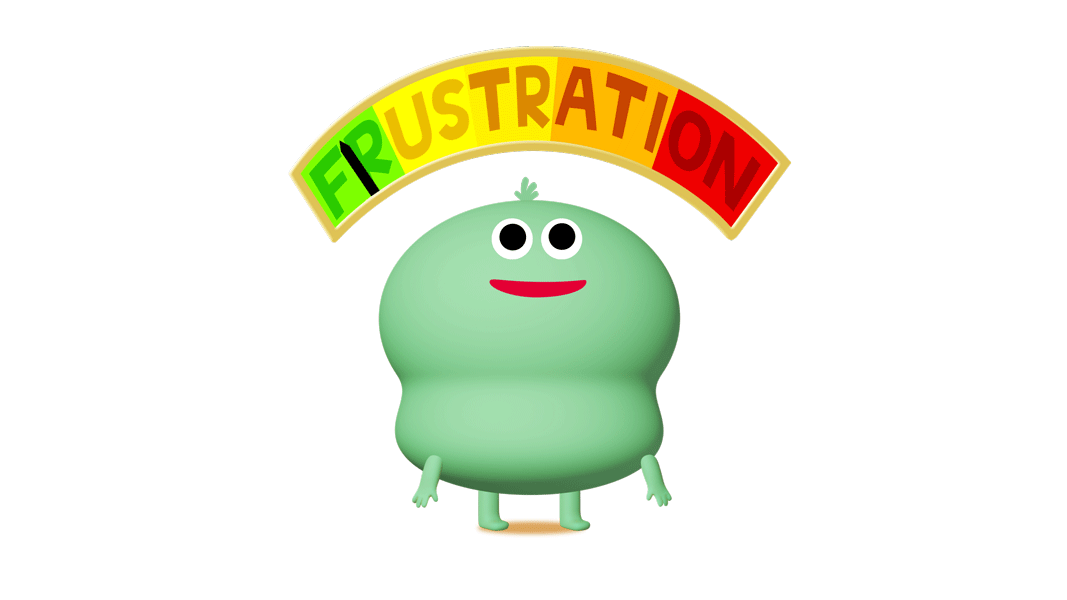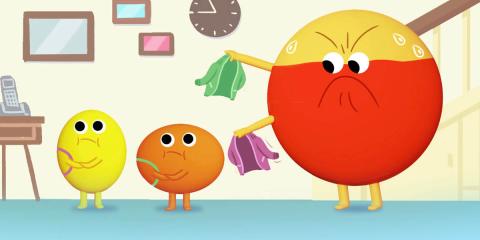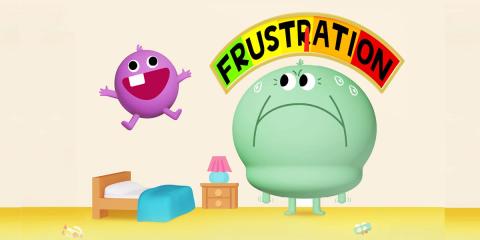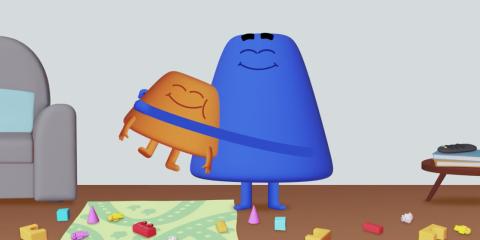If there’s one thing toddlers do well, it’s throwing a tantrum. A full-on temper tantrum is tough for you and frightening for your child. The good news is that a few simple strategies will help you deal with most of your child’s tantrums. Here are a few tried and tested tricks that may prevent tantrums happening in the first place. And if they don't always work, our page on what to do when your toddler has a tantrum has more advice.
Top tips for preventing tantrums
Tip #1: Be clear about your rules
Each family has its own rules – often unspoken – about what is and isn’t okay, so the first step in helping your child to behave well is to decide on what your rules are. Then make sure your child knows what they are and remind them often. Having a set of rules creates structure and boundaries which help to make toddlers feel safe and secure.
Tip #2: Be consistent
When you have a set of rules in place, it’s a good idea to make sure all adults who may help look after your children use the same rules. Conflict can arise when parents, and others who care for your child, follow different sets of rules, which can be really confusing for little ones. The same goes when you allow your child to do something one day then tell them off for doing the same thing the next. When you say ‘No’ make sure you mean it.
Tip #3: Expect them to behave well
Although it may not always seem like it, children love to please their parents. If you expect your wee one to behave badly, chances are they will. But if they know that you expect them to behave well, they’re much more likely to try to please. So rather than telling them not to do something, try praising them for something instead. For example, at meal times instead of saying ‘Don’t throw your food on the floor’ you could say ‘Let’s see if we can keep everything on your tray – I know you can do it!’
Tip #4: Lead the way
Kids learn by copying, so show them love and affection, treat them – and others – with consideration, listen to what they have to say and respect their feelings. And remember it’s no good telling them that getting cross or shouting is not allowed if that’s what you do!
Tip #5: Try saying yes
How many times have you said ‘no’ today? Always being refused can lead to a build-up of frustration. Next time your toddler asks you a question, think about whether you could say yes instead. For example, ‘Yes, you can do it tomorrow,’ or, ‘Yes, after we’ve been shopping.’
Tip #6: Be clear and specific
Try to make sure that your little one understands exactly what they are being asked to do. Instead of saying, ‘Please can you tidy up now,’ try, ‘Pick up your books and put them on the shelf now, please.’
Tip #7: Offer them a choice where you can

If there’s no choice about something, don’t confuse things by letting them think they can decide. Instead of saying, ‘Do you want to have your bath now?’ say, ‘Now it’s bath time.’ But if you can offer them a choice about how they do something they have to do, this is a great way to help them feel more responsible and trusted, and to understand the impact of their own decisions. So for example you could offer them a choice of toys to play with in the bath, or two different books to read at bedtime.
Tip #8: Help them identify their feelings
When your toddler misbehaves, it’s often because they don’t know any other way to deal with their feelings. You can help by letting them know that they’re allowed to show their emotions, and by giving them a name for their feelings so that they can express them. For example say, ‘It looks to me as if you’re upset/happy/sad/cross/frustrated.’ Don’t worry if you haven’t identified it correctly, they’ll soon put you right if need be.
Doing little activities like colouring in emotions can also help them to tell you how they're feeling. For example, you could do some colouring in together, with ‘red’ for angry, ‘yellow’ for happy, ‘blue’ for sad, ‘green’ for jealousy, etc. Then when they're getting upset or having a bad day you can ask ‘are you feeling red right now?’
You could also try looking at this ‘emotion wheel’ together and talking about the different emotions and how they make you both feel.
Another way to help children identify their feelings is to play the face game – find out how on the Tiny Happy People website.
Tip #9: It’s not them, it’s what they do
Constant criticism creates bad feeling and it can lead to even more difficult behaviour, not less. If your child breaks the rules, emphasise that it’s their behaviour you’re unhappy about, not them. For example, say, ‘It’s upsetting when you hit your brother,’ rather than, ‘You’re naughty’ or ‘You’re spoilt.’
Tip #10: Praise them
It can feel like you’re in a never ending loop of telling them off, but whenever you can, praise the good behaviour, even the very little things. Praise and attention are much more encouraging to your wee one than criticism or punishment, so it’s great to show that you’re pleased when your child behaves well. So reward good behaviour whenever you see it by giving them praise and cuddles and kisses. The more you can point out and praise the good behaviour, the more your wee one will want to do these things again.
For example: ‘Well done Tom, I noticed you took your shoes off all by yourself without me asking you to’. ‘Sophie, you shared your favourite toy with your wee sister, that was a really kind thing to do’, ‘I’m really pleased you tidied away your toys, and you did it without even being asked!’ Now the room is nice and tidy and we’ve got more time for your story.’
Tip #11: Use praise as a reward
Don’t use sweet treats to reward good behaviour – use praise instead. For example, you could give them a big hug and tell them how pleased you are with them. You could also say something like ‘Wait until Granny hears how good you’ve been’ and then praise them again in front of Granny or other friends and family. This will make them want to repeat the good behaviour.
Tip #12: Set aside time for chats
If you’re finding your toddler’s acting up more than usual, try to set aside short times during the day when you can chat together with no distractions. Get face to face if you can or down to their level.
See what your child is interested in and talk about that, and give them time to respond. Then copy what they say and add to it, and so on. This is called ‘serve and return’ interaction and is a powerful way to build language and help your child cope with their emotions. Children treasure these times, and it helps them feel in touch even during the times you’re not with them.
Tip #13: Stay connected
Making sure your toddler feels connected to you, cared for and safe is important to help their behaviour. It gives them the foundation they need to manage stress as they grow up. Showing interest in what they’re doing can help. So can physical contact. A hug can make them feel safe and loved, and help calm their mood. Our page on connecting with your toddler has lots more simple, every day tips that can help you build this solid relationship.
Being a parent is the best job in the world, but it can also be one of the most stressful. There will be days when it all feels a little too much. To help you manage the challenges ahead, Parent Club has some tips on coping with being a parent and keeping calm with your wee one so you can build a rewarding relationship together.

 Activities & Play
Activities & Play Behaviour
Behaviour Childcare
Childcare Development & Growing Up
Development & Growing Up Family, Friends & Relationships
Family, Friends & Relationships Feeding Your Baby
Feeding Your Baby Food & Eating
Food & Eating Health & Safety
Health & Safety Mental Health & Wellbeing
Mental Health & Wellbeing Money & Work
Money & Work Online Behaviour & Safety
Online Behaviour & Safety Pregnancy & First Days
Pregnancy & First Days School & Education
School & Education Sleep
Sleep











 Family, Friends & Relationships
Family, Friends & Relationships
 Mental Health & Wellbeing
Mental Health & Wellbeing